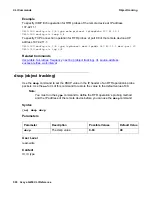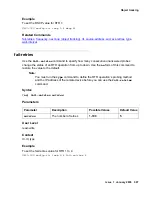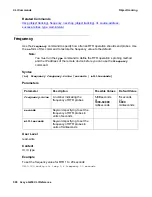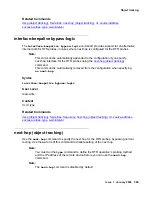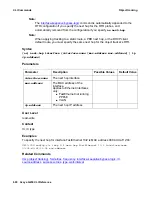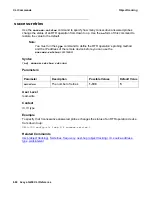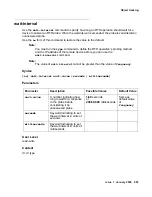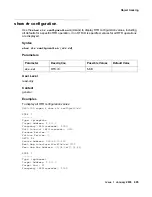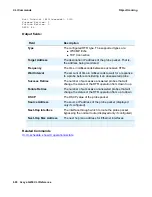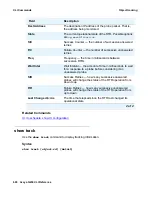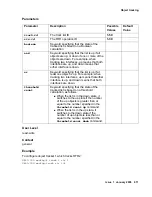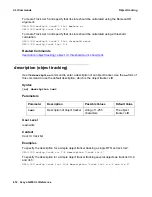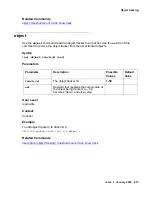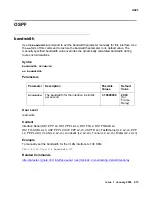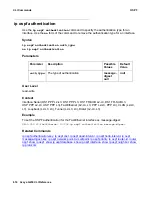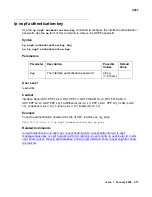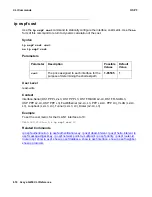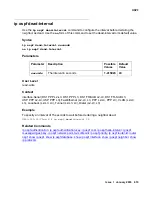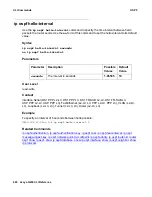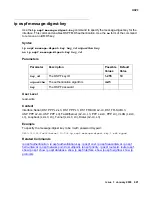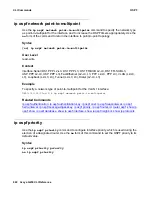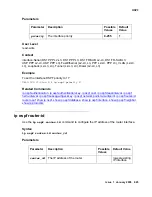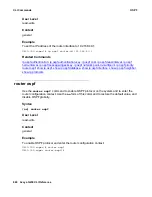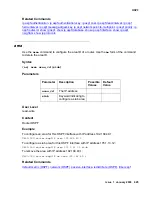
CLI Commands
Object tracking
610 Avaya G450 CLI Reference
Related Commands
track
Use the
track
command to configure an object tracker. Use the
no
form of this command to
delete the object tracker.
You can configure two types of object trackers:
An object tracker which tracks the state of a single RTR object.
A track list which is composed of multiple previously-defined object trackers. Note that when
configuring a track list you may also specify how to calculate the state of the list based on the
states of the individual object trackers composing the list. If you do not specify how to calculate
the state of the list, the boolean AND argument is used.
Note:
Note:
You cannot delete an object tracker which is a member of a track list. You must
first remove the object tracker from the track list using the
no object
command.
You cannot delete an object tracker which was linked to an application using the
keepalive-track
command. You must first use the
no keepalive-track
command to disable the link.
Syntax
[no] track
track-id
rtr
rtr-id
[no] track
track-id
list [{boolean {and | or} | threshold count}]
State
The current operational state of the object tracker.
Possible options are
up
or
down
Clients
The number of applications registered to receive updates
from this object tracker
Operational Status Last
Change
The time that elapsed since the object tracker last
changed its operational state
Registered Applications
A list of the applications registered to receive updates
from this object tracker
Field
Description
2 of 2
Summary of Contents for G450 Manager
Page 1: ...Avaya G450 CLI Reference 03 602056 Issue 1 January 2008 ...
Page 32: ...Contents 32 Avaya G450 CLI Reference ...
Page 38: ...About this Book 38 Avaya G450 CLI Reference ...
Page 154: ...Roadmap 154 Avaya G450 CLI Reference ...
Page 1304: ...CLI Commands WFVQ Weighted Fair VoIP Queueing 1304 Avaya G450 CLI Reference ...

